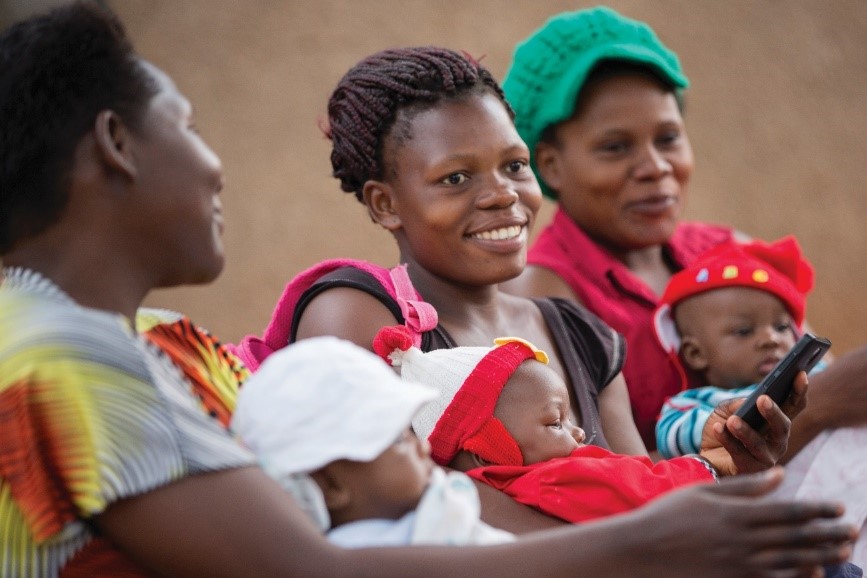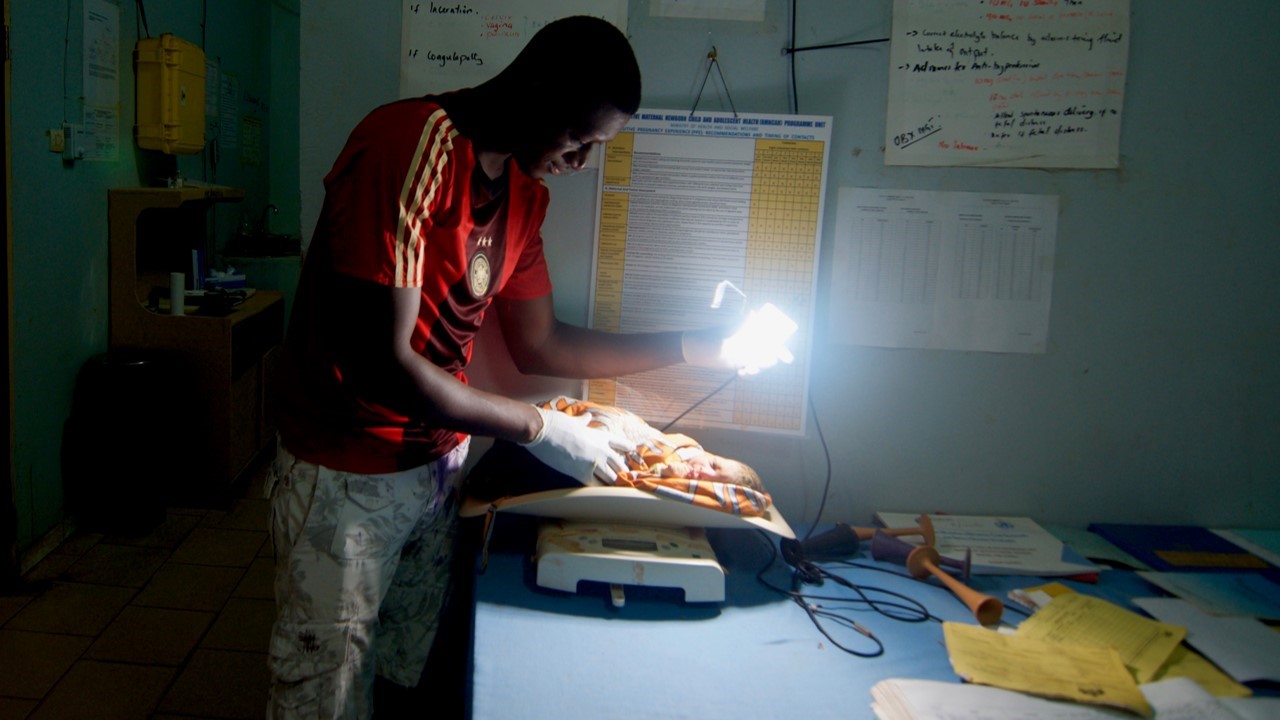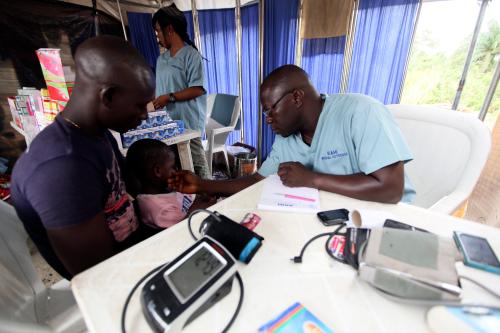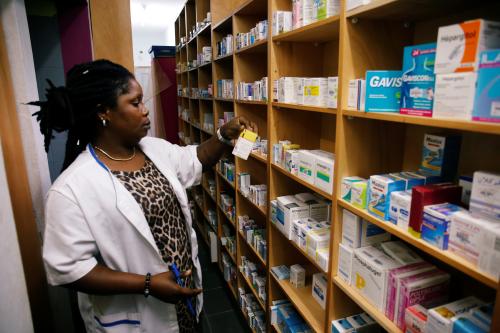This blog features insights from the recent Stories from Africa seminar series at Duke University.
Health leaders and policymakers globally have a shared interest and commitment to achieve universal health coverage (UHC) by 2030. Health systems are responding to increased demand due to population growth, aging populations with complex conditions, or prior commitments to achieve UHC. Despite health gains in the last 20 years, problems are particularly acute in sub-Saharan Africa. As economies grow to middle-income levels, they have to tackle communicable diseases while more people are living with non-communicable diseases like diabetes and hypertension. The burden of disease may be higher in low-income economies, but the complexity of this problem could well be the greatest in middle-income countries. Often, the results are escalating unmet need and in-country variation across geographies, gender, or socio-economic groups.
While increased spending is generally needed, funding alone is insufficient to address persisting or emerging gaps in quality, health outcomes, or access to care. Successful UHC efforts need both strategic design and implementation of system-level policy reforms, and capabilities within public and private organizations to support value-based care delivery innovations (beyond technology). Based on work at Duke University, we believe that a winning game plan to institute high-value health systems involves three priorities.
Priority 1: Create the financing and policy systems to encourage efficiency and innovation
Research on health innovation and policy shows that system-level transformation is achieved by incremental improvements across the health value chain. Health leaders can begin the transition from volume to value systems by developing models organized around three main areas: primary care, to create a foundation for health services; condition- or disease-specific episodes, to coordinate care to control quality and cost; and populations, to integrate care delivery across the continuum of care.
Policymakers can begin by enabling and encouraging providers to track financing and health data and to monitor costs, revenues, and utilization rates. This helps to increase accountability, especially when public money is involved. In turn, provider groups in the public or private sectors or social entrepreneurs can invest in clinical leadership, create multidisciplinary teams, and develop technology infrastructure that is interoperable across providers and platforms and can help them identify high-risk patients.
One example of this type of investment is access.mobile. Launched in 2011 in Kenya to address the lack of clinical data and record keeping, access.mobile is rolling out a fully integrated system of electronic medical record keeping that alerts high-risk patients, encourages them to seek care, reduces the total number of missed clinical appointments, and facilitates population segmentation based on data analytics. Facilities using the platform are charged a licensing fee and pay-per-message charges. They also can add on services spanning health record integration, digital engagement strategy, or full-service campaign support. Data collected through this interoperable platform is readily accessible to providers. The innovation is compliant with the 1996 Health Insurance Portability and Accountability Act on data privacy in the United States. The developer conforms to many of the act’s principles in all its operations while following local regulations for patient privacy and data sovereignty.

Priority 2: Strengthen public and private sector collaboration to shift care from hospitals to communities
Collaboration is critical for improving health systems, even for seemingly simple problems. Responding to the rural maternal and newborn needs, We Care Solar developed rechargeable suitcases to provide much-needed power to illuminate obstetric procedures, store medications, power devices such as fetal monitors, and recharge cell phones. The innovation also has expanded access to care by allowing clinics to extend hours of operation after sunset. We Care Solar has partnered with multiple philanthropic donors, the U.N., NGOs, and government entities to assemble more than 3,500 suitcases serving over 1.8 million mothers and newborns in 20 countries. In Gambia, We Care Solar has worked with Power Up Gambia to connect to public sector clinics and provide 60 suitcases.

Priority 3: Support networks to exchange learning
These are just two examples of innovation. Health leaders all across Africa are engaged in innovation of care delivery or financing models. But the exchange of knowledge is surprisingly limited. The African Collaborative for Health Financing Solutions (ACS) was established to empower the public sector, private sector, and civil society, as well as to increase accountability, collaboration, and learning. Findings from over 150 interviews in six countries and regional and global partners indicate that there still aren’t enough platforms in Africa for timely knowledge exchange, nor efforts and capacity to translate reliable evidence to policy.
Innovations in Healthcare (IiH) is a global effort to improve patient-centered, high-value care that supports the scaling and impact of innovations that address cost, quality, and access. Today, IiH works with over 80 social innovators operating in 70+ counties that span many fields from data use and patient engagement to service delivery support items. access.mobile has been active in IiH since 2016, and is partnering with Nairobi Hospital and Adventist Health White Memorial Hospital in California to adapt what is being learned in Kenya to the United States. While data access methods are context-specific for each community, the principles of health innovation, regardless of where the idea originates, can simplify or improve health systems. Africa needs many more such partnerships.
Linking policy, payment, and innovation
Adoption and scaling-up of promising approaches will depend on the ability of policymakers, providers, innovators, and people to work together. To get the biggest bang for the healthcare buck, a health policy infrastructure that aligns payment mechanisms to care delivery models and helps to improve competency in health care organizations is essential. Also vital is the personalization of health data for better care delivery, focusing particularly on rural health care delivery. There are inspiring stories about how this is being done in the region. We have to find better ways to share them.







Commentary
Achieving health gains on the way to universal health coverage in Africa
February 1, 2019